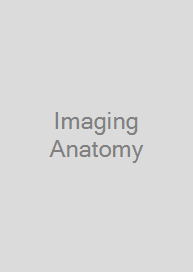Atlas of Sellar, Suprasellar and Parasellar Lesions
| Auflage | 2021 |
| Seiten | 476 pp., 1,097 illus. |
| Verlag | Thieme |
| ISBN | 9789388257534 |
| Artikel-Nr. | 619744 |
Lieferzeit ca. 5 Werktage
Produktbeschreibung
Atlas of Sellar, Suprasellar, and Parasellar Lesions, encompassing both transcranial and transsphenoidal routes, recounts the high points and advances that have made minimally invasive approaches to these complex regions possible, as well as their relative indications and technical nuances. Familiarity with the techniques, the indications, and the surgical anatomy for each procedure will allow the surgeon to tailor the operation according to the approach best suited for each patient.
Salient Features
An expert, authoritative, international team of authors provides surgical insight and guidance through pearls of wisdom from their career-long experiencesDetailed, step-by-step videos of operative procedures highlight potential technical and anatomical hazards of the lesionsRichly illustrated with hundreds of outstanding endoscopic images and corresponding drawings; this atlas successfully covers the latest techniques for skull base surgeryFrom anatomical orientation to diagnosis and evidence-based procedures, complication avoidance, and postoperative management, this book covers a wide gamut of topics that skull base surgeons face in everyday practiceThis book provides information on patient selection, choice of operative approach, special needs for minimally invasive procedures, and early diagnosis and treatment of complications after surgery
Narayanan Janakiram, MS, DLO, is the Managing Director of Royal Pearl Hospital, Tiruchirapalli, Tamil Nadu, India. He is a visiting consultant at multiple foreign universities for training young surgeons in endoscopic advanced skull base tumor resections. He is involved in research projects and publishing journals and books to share his vast experience in endoscopic excision of challenging lesions such as craniopharyngioma and cavernous sinus tumors. Internationally sought-after for his unparalleled surgical skills in lesions of the skull base and the internal carotid artery, Dr Janakiram is committed to providing creditworthy education in skull base surgeries in more than 40 countries with the integration of advanced multimedia technology, live procedures, orations, lectures, and web telecasts. As a leading specialist in Neuroendoscopy in the Asia Pacific region, his objective is to improve patient care globally.
Salient Features
An expert, authoritative, international team of authors provides surgical insight and guidance through pearls of wisdom from their career-long experiencesDetailed, step-by-step videos of operative procedures highlight potential technical and anatomical hazards of the lesionsRichly illustrated with hundreds of outstanding endoscopic images and corresponding drawings; this atlas successfully covers the latest techniques for skull base surgeryFrom anatomical orientation to diagnosis and evidence-based procedures, complication avoidance, and postoperative management, this book covers a wide gamut of topics that skull base surgeons face in everyday practiceThis book provides information on patient selection, choice of operative approach, special needs for minimally invasive procedures, and early diagnosis and treatment of complications after surgery
Narayanan Janakiram, MS, DLO, is the Managing Director of Royal Pearl Hospital, Tiruchirapalli, Tamil Nadu, India. He is a visiting consultant at multiple foreign universities for training young surgeons in endoscopic advanced skull base tumor resections. He is involved in research projects and publishing journals and books to share his vast experience in endoscopic excision of challenging lesions such as craniopharyngioma and cavernous sinus tumors. Internationally sought-after for his unparalleled surgical skills in lesions of the skull base and the internal carotid artery, Dr Janakiram is committed to providing creditworthy education in skull base surgeries in more than 40 countries with the integration of advanced multimedia technology, live procedures, orations, lectures, and web telecasts. As a leading specialist in Neuroendoscopy in the Asia Pacific region, his objective is to improve patient care globally.

Bleiben Sie informiert!
Melden Sie sich für den frohberg.de-Newsletter an und nutzen Sie jetzt Ihre Vorteil:- Willkommens-Dankeschön: Beatmungsmaske Rescue Me
- Aktuelle Neuerscheinungen und Empfehlungen
- Exklusive Angebote und Kongress-Highlights






